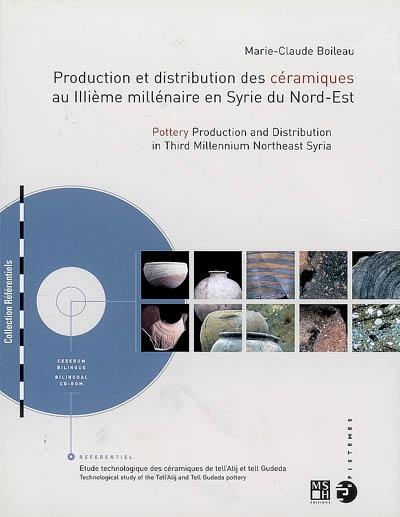
Fiche technique
Format : Broché
Poids : 310 g
Dimensions : 18cm X 23cm
ISBN : 978-2-7351-1076-6
EAN : 9782735110766
Production et distribution des céramiques au IIIe millénaire en Syrie du nord-est
étude technologique des céramiques de tell'Atij et tell Gudeda
Quatrième de couverture
Production et distribution des céramiques au IIIième millénaire en Syrie du Nord-Est
Etude technologique des céramiques de tell'Atij et tell Gudeda
Avec cette étude de corpus céramiques provenant des sites de tell'Atij et de tell Gudeda (Nord-Syrie, IIIème millénaire), l'auteur vise avant tout à reconstituer les systèmes de production et l'organisation de la société. Au-delà, il s'agit d'estimer le rôle ou l'importance de ces sites dans le cadre de l'émergence et du développement du phénomène urbain, caractéristique de la Mésopotamie à cette époque.
Dépassant ainsi la seule élaboration de chronologies relatives auxquelles se prêtait jusqu'à récemment l'étude de tels corpus, l'auteur associe à une analyse morpho-stylistique classique, une analyse technologique et une analyse physico-chimique. Leur combinaison que l'on pourrait qualifier d'approche globale lui a permis de distinguer cinq grandes traditions céramiques qu'elle interprète comme le résultat de différents systèmes de production et de distribution mettant en jeu des fabrications à des échelles, locale et régionale, témoignant ainsi des relations complexes que pouvait entretenir la population locale avec des groupes habitant dans des régions aussi diverses que le Nord ou l'Est de la Syrie.
Pottery Production and Distribution in Third Millennium Northeast Syria
Technological study of the Tell'Atij and Tell Gudeda pottery
With this study of pottery assemblages from the sites of Tell'Atij and Tell Gudeda (Northeast Syria, third millennium), the author primarily aims at reconstructing the systems of production and the organisation of society. A further aim is to assess the role or importance of these sites in the emergence and development of urbanisation, so characteristic of Mesopotamia at that time.
Going beyond the mere establishment of relative chronologies, which used to be the case of studies of such pottery assemblages, the author combines traditional morpho-stylistic analysis with technological and physico-chemical analysis. This combination, which could be considered a global approach, has enabled her to identify five major pottery traditions. The author interprets them as the result of different production and distribution systems involving production at local and regional levels, thus testifying to the complex relations that the local population may have maintained with groups living in regions as diverse as the north and east of Syria.





